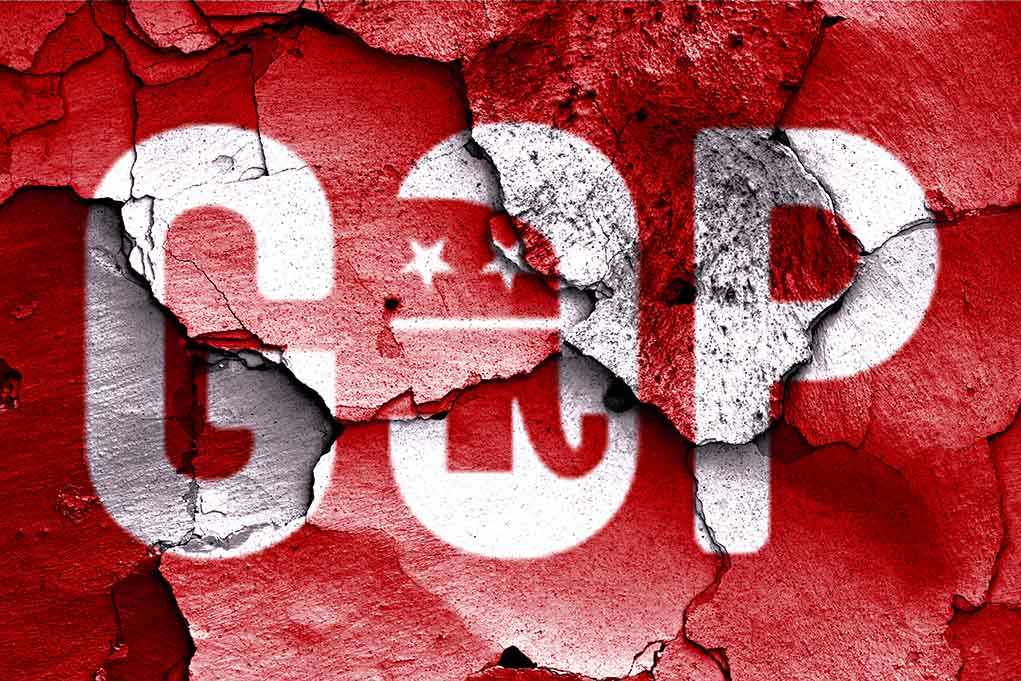
President Trump’s push for GOP unity on a funding bill highlights the ongoing battle against Democrat spending priorities and internal party divisions.
Story Snapshot
- Trump urges GOP unity on a stopgap funding bill to prevent a government shutdown.
- Democratic opposition and internal GOP divisions complicate negotiations.
- A year-long funding bill is passed, with significant domestic spending cuts.
- Trump’s influence shapes GOP strategy and limits bipartisan negotiations.
Trump’s Influence on GOP Strategy
President Donald Trump took an active role in urging Republican lawmakers to unify behind a stopgap funding bill. His intervention came amid Democratic opposition and internal GOP divisions over spending priorities. The proposed continuing resolution (CR) aimed to prevent a government shutdown at the end of September. Trump’s push for unity underscored his continued influence over the GOP’s congressional strategy, emphasizing a hardline stance against bipartisan compromise.
Trump’s call for unity resonated with his conservative base, who view government overspending and fiscal mismanagement as threats to American values. By advocating for a year-long CR rather than a short-term extension, Trump aimed to maintain government operations while advancing conservative fiscal policies. This move was seen as a strategic effort to limit negotiations with Senate Democrats, who were pushing for expanded funding for health care and social programs.
Impact of the Year-Long Continuing Resolution
The year-long CR, signed into law by Trump on September 17, 2025, included $13 billion in domestic spending cuts while targeting increases for defense and select HUD programs. This legislation effectively averted an immediate government shutdown but left unresolved issues for future negotiations. The GOP’s focus on defense spending and cuts to domestic programs reflects ongoing partisan divides over fiscal policy.
Despite averting a shutdown, the CR’s domestic spending cuts have significant implications. The National Low Income Housing Coalition projects that the funding increases for HUD are insufficient, estimating a loss of 32,000 rental assistance vouchers. Additionally, a shortfall in homeless assistance funding affects thousands of vulnerable households, exacerbating housing instability. These cuts underscore the challenges faced by low-income communities reliant on federal support.
Trump Calls On GOP To Unify On Government Funding After Several Republicans Threaten To Cross Him https://t.co/V4oKGKlvPS
— IJR (@TheIJR) September 15, 2025
Political and Social Ramifications
The CR’s passage highlights the heightened political polarization in Washington, with Trump’s influence complicating bipartisan negotiations. Senate Democrats, led by Minority Leader Chuck Schumer, criticized the GOP’s reluctance to engage in meaningful dialogue, arguing that it risks future shutdowns and undermines public trust. Political analysts warn that the reliance on CRs could destabilize budget management and deepen partisan conflict.
The ongoing political standoff emphasizes the broader economic, social, and political impacts of fiscal gridlock. Reduced domestic spending may slow growth in affected sectors, while vulnerable populations face increased hardship due to program cuts. As the GOP navigates internal divisions and external pressures, the potential for future shutdowns remains a concern, underscoring the need for effective governance and collaboration.
Sources:
Congress Passes and President Trump Signs Law: Year-Long Stopgap Funding Bill Underfunding
House GOP Eyes Stopgap Funding Bill

